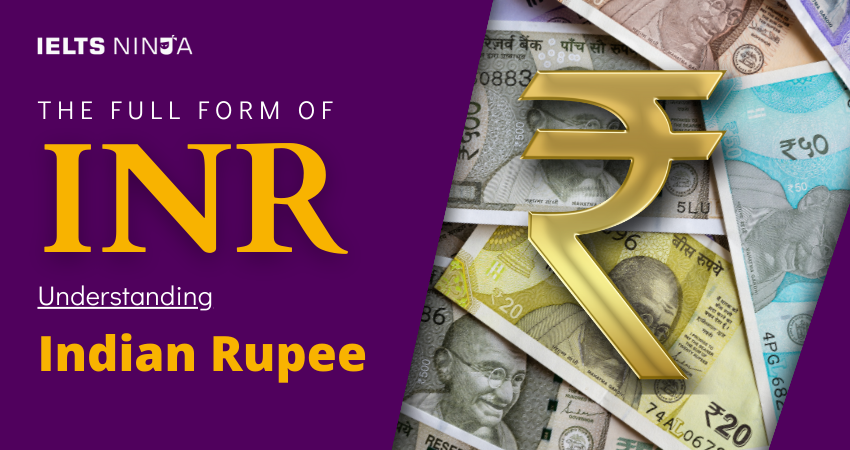In the realm of global currencies and finance, acronyms often represent the official or common names of currencies used for trade, commerce, and financial transactions. One such acronym that holds significance in the context of India’s currency is “INR.” INR stands for “Indian Rupee.” In this article, we will delve into the full form of INR, understand its historical context, and explore its importance in India’s economy and international finance.
What Does INR Stand For?
INR stands for “Indian Rupee”. The Indian Rupee is the official currency of the Republic of India.
Understanding INR
The Indian Rupee has a long and rich history dating back centuries. It has evolved over time from being a commodity currency backed by precious metals to the modern fiat currency used in India today.
Key Details and Features of INR
Symbol:
The Indian Rupee is denoted by the symbol “₹,” which was officially adopted in 2010. This symbol represents the letter “R” with two horizontal lines, indicating the currency’s unique identity.
Subunits:
The Indian Rupee is divided into subunits known as “paise.” One Rupee is equivalent to 100 paise. However, paise is rarely used in daily transactions, and prices are typically rounded to the nearest Rupee.
Coins and Banknotes:
The Indian Rupee is issued in both coin and banknote form. Coins are available in various denominations, including 1, 2, 5, and 10 Rupees, while banknotes are available in denominations such as 10, 20, 50, 100, 200, 500, and 2000 Rupees.
Reserve Bank of India (RBI):
The Reserve Bank of India, as the country’s central bank, is responsible for the issuance and regulation of the Indian Rupee.
International Use:
While the primary use of the Indian Rupee is within India, it is also accepted in neighboring countries like Nepal and Bhutan. Additionally, it is traded on international currency markets.
Exchange Rate:
The value of the Indian Rupee in relation to other currencies fluctuates based on factors such as economic conditions, interest rates, and global market forces.
Also Read: Best online IELTS coaching & training academy
Importance of INR
The Indian Rupee is the lifeblood of India’s economy, serving as the medium of exchange for goods and services, as well as a store of value. It plays a pivotal role in the daily lives of millions of Indians and is essential for domestic and international trade.
INRs Historical Significance
The Indian Rupee has a rich history dating back to ancient times when it was initially a unit of weight for precious metals like silver. Over the centuries, it evolved into a full-fledged currency with distinctive designs and denominations.
Conclusion
In conclusion, the Indian Rupee (INR) is not just a unit of currency; it represents the economic vibrancy and history of India. As one of the world’s most widely recognized currencies, the INR plays a critical role in facilitating economic activities within India and has a presence on the global financial stage. As you encounter the abbreviation “INR” in discussions related to finance, trade, and economics, remember that it symbolizes the currency that underpins India’s economic growth and development.








